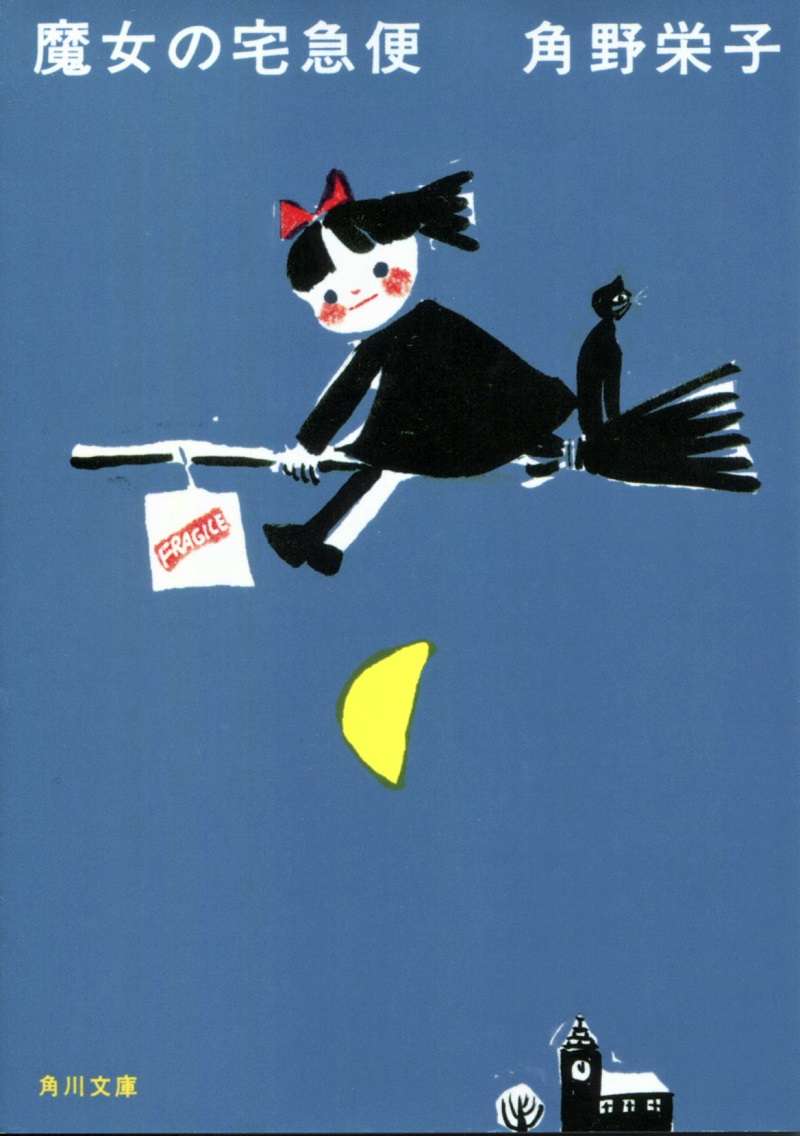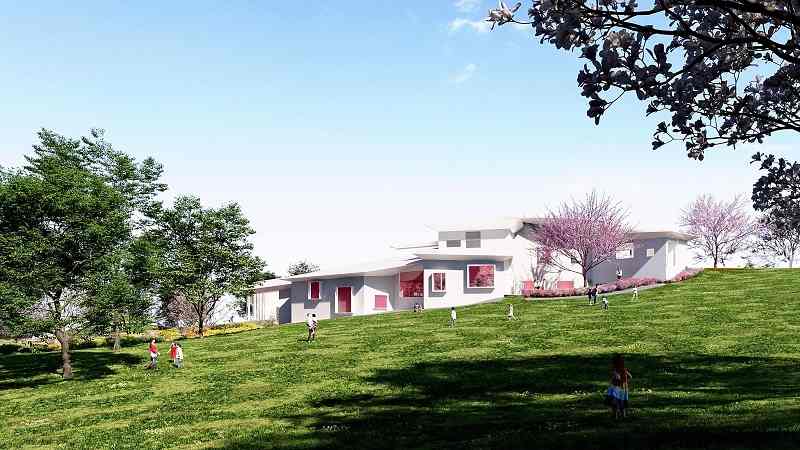Eiko Kadono’s books have charmed children for decades

Eiko Kadono
10:40 JST, September 1, 2022
Books for children in Japan are rich and diverse. From the 1980s to the 1990s, the genre expanded beyond conventional children’s literature to include various works such as fantasy, books for young adults, and more. The Yomiuri Shimbun recently conducted an online interview with Eiko Kadono, 87, who has written many books that capture the hearts of children, including “Majo no Takkyubin” (“Kiki’s Delivery Service”).
A witch flies in the moonlight, riding on a broom with a radio hanging from it. A little black cat also rides the broom, sitting behind her. Musical notes are scattered around them.
This drawing by Kadono’s daughter when she was a teenager became a source of inspiration for Kadono to create “Kiki’s Delivery Service,” which was published in 1985.
Kadono thought: “If she can fly, she can carry things. How about a story about a young witch who moves to an unfamiliar town and starts living on her own?”
And so Kadono devised Kiki, the human witch girl protagonist who starts a delivery service on her broom in the town with her companion, a black cat named Jiji. This was the moment the long-running series started, which would again become popular with the release of an anime film adaptation by Hayao Miyazaki.
“I just write stories as they are in my mind. That’s it,” Kadono said when asked the secret behind her creations. “I want to say something cool, but actually I just write because I love writing.”

Born in 1935, Kadono made her debut with “Luizinho shonen: Brazil o tazunete” (“Brazil and My Friend Luizinho”). She won the Noma Prize for Juvenile Literature and other awards for “Kiki’s Delivery Service.”
Kadono was 5 when her mother died. Her father remarried, and two months later, he went to war. She was left at home with her stepmother. “I was at a loss what to do,” Kadono said.
As the war situation worsened, she was evacuated to the countryside. She then had to battle hunger. “I was very lonely. As a child at the time, I was in a tough situation,” Kadono said.
While struggling through the hard times, she remembered stories that her father had told her, and that she had read when she was younger. Once she was in the world of stories, she temporarily forgot her hunger, played around freely and felt satisfied.
After graduating from university, Kadono got married and went to Brazil in her 20s to see the newly built city of Brasilia. On her return to Japan, she made her debut as a writer with a children’s book based on her experiences abroad, as recommended by a teacher from her university days.
The joy of writing awakened her. She enjoyed the work so much that she thought to herself every day: “I want to write! I want to write!”
Since then, she has continued creating stories as a leading writer of children’s literature. In 2018, she was awarded the Hans Christian Andersen Award, considered the Nobel Prize for children’s literature.
During the interview, a roll curtain could be seen behind Kadono that had colorfully painted images of ghosts, flowers and the sun.
“I love to draw,” Kadono said. “Whenever I don’t make progress on my writing, I doodle for fun.”
She said calmly: “I’m in a world of fantasy for a third of my daily life. That’s how I’ve lived for a long time.”

A conceptual image of a children’s literature museum in honor of Eiko Kadono to be opened in Edogawa Ward, Tokyo
Many works follow
In the past, fantasies by overseas authors set in a fictional world were often recommended for children, such as “The Chronicles of Narnia” by C.S. Lewis and “The Lord of the Rings” by J.R.R. Tolkien, both British authors.
Kadono’s “Kiki’s Delivery Service” seems to have initiated a broader range of books and stories intended for Japanese children.
In November next year, a children’s literature museum in honor of Kadono will open in Edogawa Ward, Tokyo. Designed by renowned architect Kengo Kuma, the museum will have about 10,000 books of “interesting stories for both children and adults to enjoy.” Kadono is currently busy selecting books for the museum’s library.
Among her creations over the more than 50 years since her debut, she has a special attachment to the “Acchi, Kocchi, Socchi no Chiisana Obake” (“Acchi, Kocchi, Socchi the Little Ghosts”) series that has been running since 1979.
Children’s books are like heirlooms that are read and then passed down from parents to their children and then to the grandchildren.
“Some of my readers are three generations of a family,” Kadono said. “I have enjoyed writing for decades, and I have readers who enjoy reading them for decades. I’m a very happy writer.”



